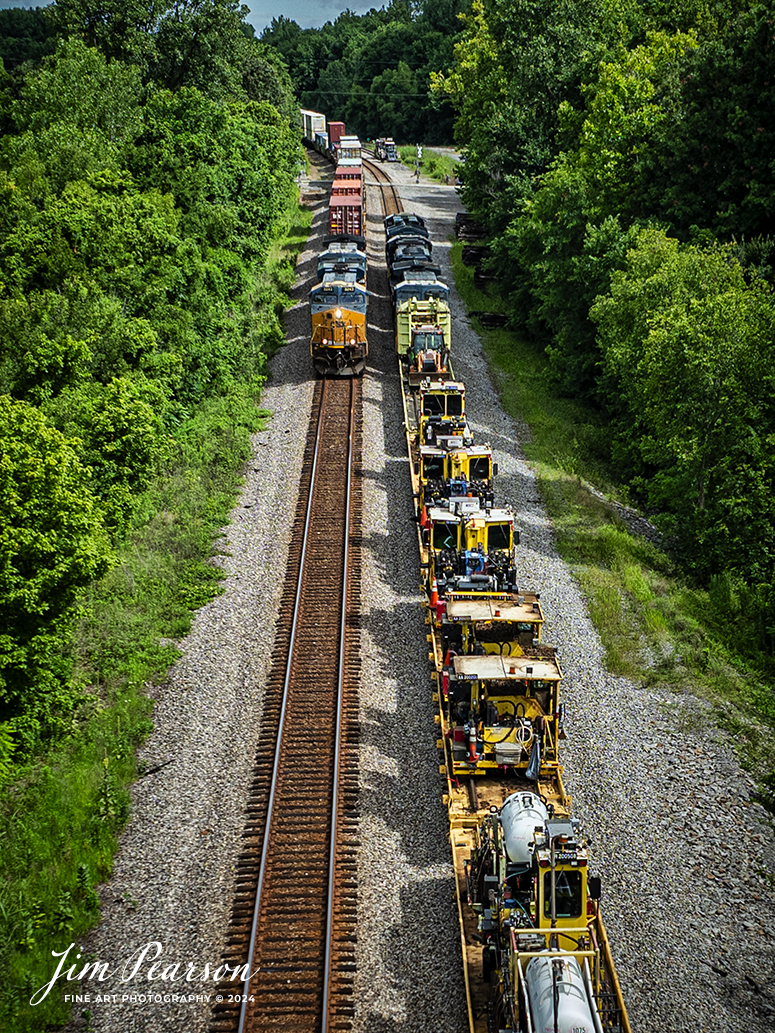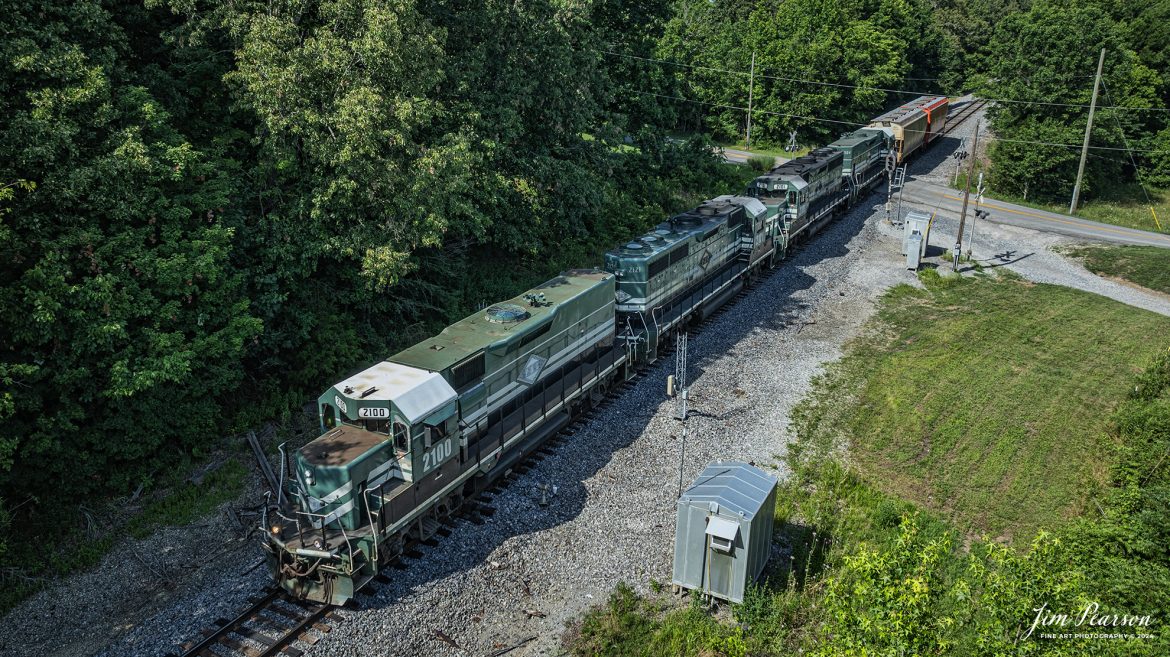CSXT 1875, the P&LE Heritage Unit, leads CSX M513, southbound on the subdivision, across the Red River Trestle at Adams, Tennessee on June 24th, 2024 along the CSX Henderson Subdivision.
According to a CSX Press Release: June 6, 2024 – CSX has released a new heritage locomotive, the P&LE 1875, paying tribute to the storied Pittsburgh & Lake Erie Railroad (P&LE). The 15th in CSX’s heritage locomotive series, this new addition to the company’s fleet not only celebrates the rich history of P&LE but also marks a significant milestone in CSX’s ongoing commitment to honoring the legacies of America’s historic railroads.
The Pittsburgh & Lake Erie Railroad was established in 1875 with a primary mission of transporting essential industrial materials such as coal, coke, iron ore, limestone, and steel among the bustling industrial hubs of the region.
“It’s mainline connected Pittsburgh, Pennsylvania with Youngstown, Ohio and Connellsville, Pennsylvania. It did not actually reach Lake Erie until 1976,” explained Tim Music, a carman painter at the CSX Waycross Locomotive Shop where the unit was produced.
Despite its relatively modest route mileage, the P&LE Railroad earned the nickname “Little Giant” due to the enormous volume of heavy tonnage it moved. This impressive capability drew significant attention and by 1887, the P&LE became a subsidiary of the dominant New York Central Railroad. Under this new ownership, the P&LE enjoyed substantial improvements to its tracks and added capacity for passenger services, further enhancing its regional significance.
Over time, P&LE expanded by leasing branches from smaller railroads. These extensions included lines southeast along the Monongahela River through Homestead and McKeesport, and along the Youghiogheny River to Connellsville, where it connected with the Western Maryland Railway.
Tech Info: DJI Mavic 3 Classic Drone, RAW, 22mm, f/2.8, 1/1250, ISO 120.




















